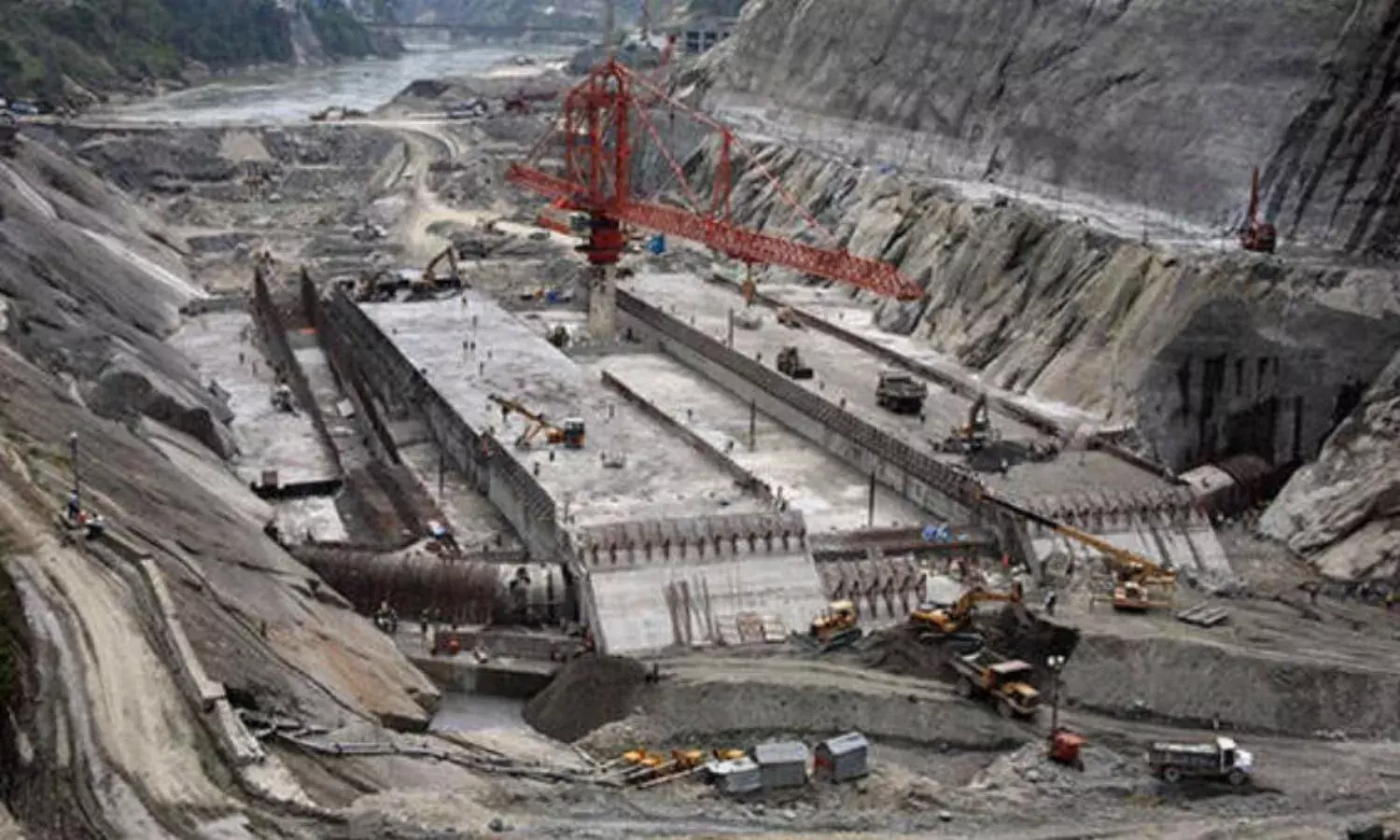Mega Dam Agreement Inked As Protests Continue
Activists want power capacity reduced and the protection of people living downstream

ITANAGAR: The controversial 2000-MW Subansiri Lower Hydroelectric Project (SLHEP) continues to be in the news with the Arunachal Pradesh government and the National Hydro Power Corporation (NHPC) agreeing to terms for its power purchase agreement (PPA).
The project has been in the news recently since it was reported that NHPC plans to resume construction of the dam in October this year. Construction was stopped in December 2011 following agitation by activist groups in Assam over the downstream impact of the dam.
Recently, the NHPC signed a memorandum of agreement (MoA) with the Assam state government to develop the project located along the borders of Assam and Arunachal Pradesh at Gerukamukh.
NHPC had inked an MoA with the Arunachal Pradesh state government for setting up the project but since the project falls in the territories of both states, another agreement had to be signed with the Assam state government.
The National Green Tribunal (NGT) had given the go-ahead to the project on July 31 this year.
On Tuesday, at a meeting of chief secretaries and principal secretaries of power of north-eastern states in Guwahati, Assam, the state-owned power developer signed a PPA with the Arunachal Pradesh government.
A PPA covers all aspects of the sale of electricity between two parties.
At the meeting at Guwahati, the Union minister of state for power and new and renewable energy, RK Singh, said that the power sector is “prerequisite to the economic development” of the region.
The PPA was signed on the same day that tribal representative bodies in Assam, including the Takam Mising Porin Kebang, Mising Mimak Kebang, and Takam Mising Mime Kebang, held protest marches across the state against the project. The organisations are demanding that the power capacity of the dam be reduced to a safe level and ensure the protection of people living in the dam’s downstream areas.
A 2010 study showed that the dam would submerge 47 km of the Subansiri river and over 3,400 hectares of forestland in Arunachal Pradesh and have relatively little human displacement upstream. However, during the negotiations, Indian government policy meant that the downstream impact was not considered as there are no provisions for it.
Work on the project is expected to be completed in three-and-a-half years with a total expenditure of Rs 20,000 crore on its completion.
As per the Central Electricity Authority, Arunachal Pradesh alone has 50,328 MW of the country’s total 148,701 MW identified hydropower potential above 25 MW. There are currently close to 140 projects for which agreements have been signed with various private and public sector power developers across the state’s five major river basins. However, only two hydropower projects are currently operational in the state, with a third (the 600MW Kameng project) scheduled to begin operations later this year.
In July this year, the Cabinet Committee on Economic Affairs, chaired by the prime minister Narendra Modi, gave its green light for the construction of the 2,880MW Dibang Multipurpose Project- set to be India’s largest.
The projected cost is estimated at over Rs 28,000 crore with an estimated completion period of nine years. It is estimated that the Dibang project will result in the felling of over three lakh trees and diversion of 5,056.5 hectares of forestland.



